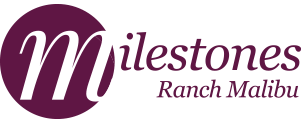Wilderness Program Rehabs: Nature-Based Healing for Addiction and Mental Health
Wilderness program rehabs represent a unique and increasingly popular approach to treating substance abuse and mental health disorders. These programs blend traditional therapeutic practices with outdoor experiential learning, utilizing the healing power of nature as a catalyst for personal transformation. Designed for individuals who may not respond well to conventional rehab environments, wilderness therapy provides an immersive, distraction-free setting that encourages self-reflection, resilience, and growth. Often serving adolescents and young adults, these programs are gaining recognition as effective alternatives or complements to residential and outpatient treatment models.
The Structure and Philosophy Behind Wilderness Rehabs
Wilderness program rehabs are grounded in the idea that a challenging outdoor environment can foster psychological and emotional growth. Participants live and function in remote natural settings, typically for several weeks to a few months. Activities include hiking, camping, wilderness survival skills, group therapy, individual counseling, and journaling. Unlike traditional rehab centers, these programs minimize modern distractions—like technology and urban environments—and emphasize the development of personal responsibility, leadership, and self-efficacy.
Therapeutic methods often draw from evidence-based modalities such as Cognitive Behavioral Therapy (CBT), Dialectical Behavior Therapy (DBT), and Motivational Interviewing, which are integrated into daily wilderness activities. For example, a guided hike might be followed by a reflective journaling exercise, helping individuals process their emotional responses and learn coping mechanisms. Clinical staff, including licensed therapists and field guides trained in crisis intervention and psychology, are embedded in the group and provide consistent therapeutic support throughout the program.
Benefits of Nature-Based Treatment
The outdoor setting of wilderness rehab offers several psychological and physiological benefits. Numerous studies have shown that nature exposure can lower cortisol levels (a stress hormone), improve mood, and increase attention span. For people struggling with anxiety, depression, or trauma-related disorders, the calming effect of natural surroundings can be especially healing. Moreover, being physically active in nature fosters the development of healthy routines, which are crucial for long-term recovery from addiction.
Additionally, wilderness programs encourage the formation of strong peer connections. Because participants rely on each other to complete daily tasks like building shelters or cooking meals, a sense of community and shared accountability often emerges. This can be particularly valuable for young adults who may feel isolated or misunderstood in their daily lives. These interpersonal experiences help rebuild trust and improve communication skills—important tools for reintegrating into family, school, or work settings post-treatment.
Who Wilderness Rehabs Are For—and Their Limitations
Wilderness therapy is especially beneficial for adolescents and young adults dealing with behavioral issues, substance use, trauma, depression, or anxiety. These programs can also be helpful for individuals resistant to more traditional treatment settings. The immersive nature of wilderness therapy strips away many of the avoidant behaviors and distractions that can interfere with recovery, creating space for deeper emotional breakthroughs.
However, wilderness programs are not a one-size-fits-all solution. Individuals with severe psychiatric conditions such as active psychosis, suicidal ideation requiring hospitalization, or complex medical needs may not be suitable for this setting. Programs typically conduct thorough medical and psychological assessments prior to admission to ensure safety. Another limitation is the cost; wilderness rehabs often charge thousands of dollars per week and may not always be covered by insurance. Accessibility, especially for lower-income families, can therefore be a concern.
FAQs - Wilderness Program Rehabs
A wilderness program rehab is a form of behavioral health treatment that takes place in remote, natural settings, using the outdoors as a therapeutic backdrop. Unlike traditional rehab centers, these programs immerse participants in structured outdoor activities such as hiking, camping, and survival skills while integrating therapy and counseling. The philosophy behind this model is that nature provides a powerful context for healing, personal growth, and self-discovery, helping individuals confront addiction or mental health challenges away from everyday distractions. For example, a participant in a Utah-based wilderness program may spend weeks hiking in the desert, engaging in daily group therapy, and learning mindfulness through interaction with nature. These experiences are often supervised by licensed therapists and outdoor guides, who combine adventure-based learning with clinical interventions.
Wilderness rehab programs are particularly suited for adolescents and young adults struggling with substance use, behavioral issues, anxiety, depression, or trauma. These individuals often benefit from an environment that fosters accountability, self-reliance, and emotional reflection—without the distractions of digital devices, peer pressure, or urban stressors. For example, a teenager who has been resistant to talk therapy or has relapsed in traditional outpatient programs may find wilderness treatment more engaging and effective. However, candidates must typically be in stable physical condition and capable of moderate outdoor exertion, as these programs involve physically demanding activities.
Wilderness therapy programs blend evidence-based clinical approaches with experiential learning. Common therapies include Cognitive Behavioral Therapy (CBT), Dialectical Behavior Therapy (DBT), motivational interviewing, and trauma-informed practices. These are integrated into daily routines alongside outdoor challenges that test resilience and promote emotional breakthroughs. For instance, a client may participate in a guided solo reflection period after a strenuous hike, followed by a therapy session that connects the physical journey to emotional healing. Group therapy around a campfire or journal writing after a team-building exercise are typical therapeutic modalities in such programs.
Yes, many wilderness rehabs are designed to treat dual diagnosis cases, combining addiction treatment with mental health support. Programs often employ licensed clinicians who are trained in co-occurring disorders and are equipped to address both aspects simultaneously. The structured, distraction-free environment can be particularly helpful in stabilizing mood disorders while teaching coping strategies for substance cravings. For example, someone with generalized anxiety disorder and alcohol dependency may benefit from the introspective setting of a wilderness program, where clinical sessions are augmented by grounding activities like hiking or mindfulness exercises in nature.
Wilderness programs usually range from 4 to 12 weeks, depending on the individual's needs, progress, and the specific program structure. Some offer flexible durations or transitions into longer-term residential care. The length is designed to allow enough time for detox (if necessary), personal development, and therapeutic integration. For example, a 60-day program might begin with intensive physical and emotional challenges in week one, followed by more individualized therapy sessions, family involvement, and a structured reintegration plan in the final weeks.
Wilderness rehabs prioritize safety and typically include comprehensive risk management plans. Staff are trained in wilderness first aid, CPR, and emergency protocols, and many programs have medical professionals either on-call or on-site. Satellite phones, GPS tracking, and evacuation plans are standard. For example, in the event of a medical emergency like a severe allergic reaction, staff can administer epinephrine and coordinate an airlift or ground evacuation to the nearest hospital. Pre-admission health screenings also ensure participants are physically capable of handling the outdoor demands.
Success is measured through clinical assessments, participant self-reports, behavioral changes, and follow-up evaluations. Programs often use pre- and post-treatment surveys to gauge improvement in areas like anxiety, depression, substance use, and self-efficacy. Long-term success is monitored through continued therapy or aftercare plans. For instance, a participant who enters the program with a high level of emotional dysregulation may, by the end, show improved impulse control, reduced cravings, and greater resilience—all indicators of a positive treatment outcome.
Insurance coverage for wilderness programs varies widely. Some private insurers may partially reimburse costs, particularly if the program includes licensed therapists and evidence-based modalities. However, Medicaid and Medicare typically do not cover wilderness treatment, as these programs are considered alternative or non-traditional. For example, a family with private insurance may receive partial reimbursement for the therapy component but must cover the adventure and boarding portions out-of-pocket. It's essential to verify coverage with both the program and the insurer beforehand.
Family involvement is a key component of many wilderness programs. Parents or guardians may participate in multi-day workshops, family therapy sessions (sometimes virtually), and structured transition planning. These efforts aim to improve communication, set boundaries, and create a supportive home environment for reintegration. For instance, a parent might attend a weekend retreat near the program site to engage in therapeutic activities with their child, facilitated by clinicians. This often enhances understanding and reinforces treatment gains.
To find a reputable wilderness rehab, look for programs accredited by organizations such as the Association for Experiential Education (AEE) or licensed by state health departments. Reviews, testimonials, and third-party evaluations can also offer insight into the quality of care. It’s important to ensure that the staff includes licensed mental health professionals and that the program uses evidence-based practices. Websites like the National Association of Therapeutic Schools and Programs (NATSAP) or All Kinds of Therapy maintain vetted directories of reputable wilderness programs. Asking about staff credentials, emergency protocols, and alumni outcomes can help validate a program’s credibility.
Conclusion
Wilderness program rehabs offer a powerful alternative to traditional addiction and mental health treatment. By placing individuals in natural settings and combining outdoor activities with clinical therapy, these programs foster resilience, emotional regulation, and long-lasting behavioral change. Although not suitable for everyone, wilderness therapy is particularly effective for adolescents and young adults who benefit from experiential learning, community building, and being removed from triggering environments. As interest in holistic and alternative therapies continues to grow, wilderness programs are poised to play a larger role in the landscape of behavioral health care.
Sources
- Gass, M. A., Gillis, H. L., & Russell, K. C. (2012). Adventure Therapy: Theory, Research, and Practice. Routledge.
- Bettmann, J. E., Tucker, A. R., Behrens, E., & Vanderloo, M. (2017). Outcomes of wilderness therapy for adolescents: A summary of research findings. Journal of Therapeutic Schools and Programs.
- National Association of Therapeutic Schools and Programs (NATSAP)




